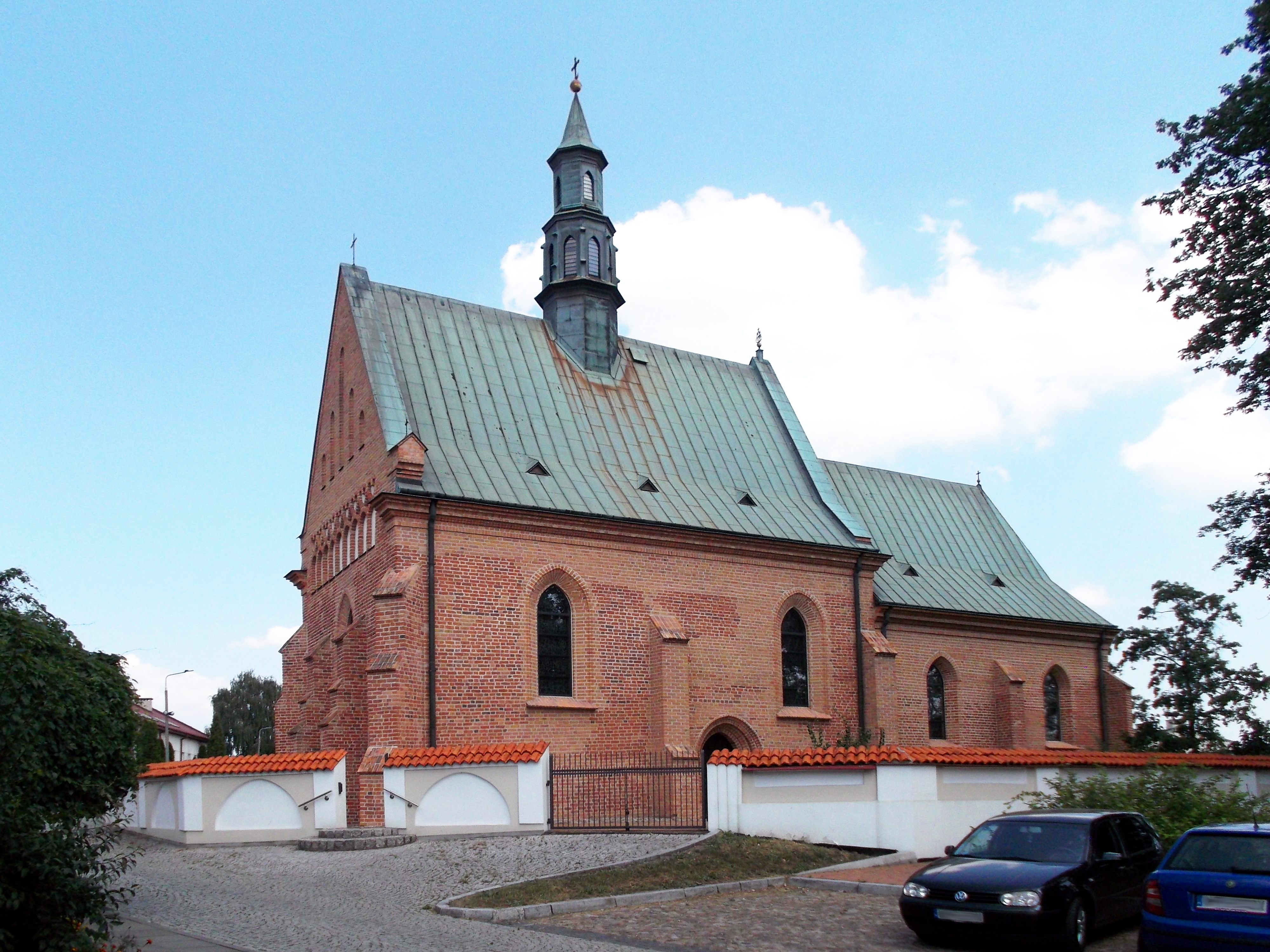|
2008 Poland Tornado Outbreak
A tornado outbreak struck southern and central Poland on 15 August 2008. Overall, it killed four people. Tornadoes affected Opole Voivodeship, Silesian Voivodeship and Łódź Voivodeship. The European Storm Forecast Experiment issued a Level 3 which means there could potentially be a major severe thunderstorm outbreak. Tornado outbreak Multiple supercells formed in southern Poland on the afternoon of 15 August 2008 and produced several significant tornadoes that resulted in many casualties and significant damage. The main tornado-producer was a long-tracked right moving supercell with a BWER and a hook echo visible on radar which formed in southern Poland and moved north-northeastward, spawning several strong tornadoes. The outbreak began when a weak tornado touched down in Knurów causing little damage. While the first tornado was occurring, the main tornado-producer produced its first tornado, a large and violent multiple-vortex that struck the villages of Dolnica, Kopan ... [...More Info...] [...Related Items...] OR: [Wikipedia] [Google] [Baidu] |
Tornado Outbreak
A tornado outbreak is the occurrence of multiple tornadoes spawned by the same Synoptic scale meteorology, synoptic scale weather system. The number of tornadoes required to qualify as an outbreak typically are at least six to ten, with at least two rotational locations (if squall line) or at least two supercells producing Tornado family, multiple tornadoes. The tornadoes usually occur within the same day or continue into the early morning hours of the succeeding day, and within the same region. Most definitions allow for a break in tornado activity (time elapsed from the end of the last tornado to the beginning of the next tornado) of six hours. If tornado activity indeed resumes after such a lull, many definitions consider the event to be a new outbreak. A series of continuous or nearly continuous tornado outbreak days is a tornado outbreak sequence. In the United States and Canada, tornado outbreaks usually occur from March through June in the Great Plains, the Midwestern Unit ... [...More Info...] [...Related Items...] OR: [Wikipedia] [Google] [Baidu] |
Błotnica Strzelecka
Błotnica Strzelecka is a village in the administrative district of Gmina Strzelce Opolskie, within Strzelce County, Opole Voivodeship, in southern Poland. It lies approximately south east of Strzelce Opolskie and south-east of the regional capital Opole. History In the 10th century the area became part of the emerging Polish state. The village was mentioned in the ''Liber fundationis episcopatus Vratislaviensis'' from around 1305, when it was part of fragmented Piast-ruled Poland. Later on, it was also part of Bohemia (Czechia), Prussia, and Germany. In 1936, during a massive Nazi campaign of renaming of placenames, it was renamed to ''Quellengrund'' to erase traces of Polish origin. During World War II, the Germans operated the E541 forced labour subcamp of the Stalag VIII-B/344 prisoner-of-war camp in the village. Following the defeat of Germany in the war, in 1945, the village became again part of Poland and its historic name was restored. Transport There is a train stati ... [...More Info...] [...Related Items...] OR: [Wikipedia] [Google] [Baidu] |
TORRO Scale
The TORRO tornado intensity scale (or T-Scale) is a scale measuring tornado intensity between T0 and T11. It was proposed by Terence Meaden of the Tornado and Storm Research Organisation (TORRO), a meteorological organisation in the United Kingdom, as an extension of the Beaufort scale. History and derivation from Beaufort scale The scale was tested from 1972 to 1975 and was made public at a meeting of the Royal Meteorological Society in 1975. The scale sets T0 as the equivalent of 8 on the Beaufort scale and is related to the Beaufort scale (B), up to 12 on the Beaufort scale, by the formula: : ''B'' = 2 (''T'' + 4) and conversely: : ''T'' = ''B''/2 - 4 The Beaufort scale was first introduced in 1805, and in 1921 quantified. It expresses the wind speed as faster than v in the formula: : v = 0.837 ''B''3/2 m/s TORRO scale formula Most UK tornadoes are T6 or below with the strongest known UK tornado estimated as a T9 (the 1666 Lincolnshire tornado). For comparison, th ... [...More Info...] [...Related Items...] OR: [Wikipedia] [Google] [Baidu] |
Fujita Scale
The Fujita scale (F-Scale; ), or Fujita–Pearson scale (FPP scale), is a scale for rating tornado intensity, based primarily on the damage tornadoes inflict on human-built structures and vegetation. The official Fujita scale category is determined by meteorologists and civil engineer, engineers after a ground or Aerial survey, aerial damage survey, or both; and depending on the circumstances, ground-swirl patterns (cycloidal marks), weather radar data, witness testimonies, media reports and damage imagery, as well as photogrammetry or videogrammetry if motion picture recording is available. The Fujita scale was replaced with the Enhanced Fujita scale (EF-Scale) in the United States in February 2007. In April 2013, Canada adopted the EF-Scale over the Fujita scale along with 31 "Specific Damage Indicators" used by Environment Canada (EC) in their ratings. Background The scale was introduced in 1971 by Ted Fujita of the University of Chicago, in collaboration with Allen Pearson ... [...More Info...] [...Related Items...] OR: [Wikipedia] [Google] [Baidu] |
Seroczyn, Siedlce County
Seroczyn is a village in the administrative district of Siedlce County, Masovian Voivodeship, in east-central Poland. It lies approximately south-west of Siedlce, and east of Warsaw Warsaw, officially the Capital City of Warsaw, is the capital and List of cities and towns in Poland, largest city of Poland. The metropolis stands on the Vistula, River Vistula in east-central Poland. Its population is officially estimated at .... References External links Jewish Community in Seroczynon Virtual Shtetl Seroczyn on the web Villages in Siedlce County Holocaust locations in Poland {{Siedlce-geo-stub ... [...More Info...] [...Related Items...] OR: [Wikipedia] [Google] [Baidu] |
Osiny-Kolonia
Osiny-Kolonia is a village in the administrative district of Gmina Szczerców, within Bełchatów County, Łódź Voivodeship, in central Poland. It lies approximately south-east of Szczerców, south-west of Bełchatów, and south of the regional capital Łódź Łódź is a city in central Poland and a former industrial centre. It is the capital of Łódź Voivodeship, and is located south-west of Warsaw. Łódź has a population of 655,279, making it the country's List of cities and towns in Polan .... References Villages in Bełchatów County {{Bełchatów-geo-stub ... [...More Info...] [...Related Items...] OR: [Wikipedia] [Google] [Baidu] |
Radom
Radom is a city in east-central Poland, located approximately south of the capital, Warsaw. It is situated on the Mleczna River in the Masovian Voivodeship. Radom is the fifteenth-largest city in Poland and the second-largest in its province with a population of 196,918 (30.06.2023) Radom was a significant center of administration, having served as seat of the Polish Crown Council which ratified the Pact of Vilnius and Radom between Lithuania and Poland in 1401. The Nihil novi and Łaski's Statute were adopted by the Sejm at Radom's Royal Castle in 1505. In 1976, it was a center of the June 1976 protests. Despite being part of the Masovian Voivodeship, the city historically belongs to Lesser Poland. The city is home to the biennial Radom Air Show, the largest air show in the country, held during the last weekend of August. "Radom" is also the popular unofficial name for a semiautomatic FB Vis pistol, which was produced from 1935 to 1944 by Radom's Łucznik Arms Factory. ... [...More Info...] [...Related Items...] OR: [Wikipedia] [Google] [Baidu] |
Radomsko
Radomsko () is a city in southern Poland with 44,700 inhabitants (2021). It is situated on the Radomka river in the Łódź Voivodeship. It is the county seat of Radomsko County. Founded in the 11th century, Radomsko is a former royal city located within the Sieradz Land, which prospered as a trade center due to its location at the intersection of important trade routes. In the 14th century, it was the site of congresses at which Princess Jadwiga of Poland was chosen as Queen of Poland as the country's first female monarch. Due to particularly strong Polish resistance movement in World War II, partisan resistance against Occupation of Poland (1939–1945), German occupiers during World War II, it was dubbed ''Banditenstadt'' ("City of Bandits") by the Germans. It is located on the Warszawa Zachodnia-Katowice line, main railway line connecting Warsaw and Katowice, the country's two largest metropolitan areas, and on the A1 autostrada (Poland), main highway connecting Gdańsk and Ł� ... [...More Info...] [...Related Items...] OR: [Wikipedia] [Google] [Baidu] |
Mykanów
Mykanów is a village in Częstochowa County, Silesian Voivodeship, in southern Poland. It is the seat of the gmina (administrative district) called Gmina Mykanów. It lies approximately north of Częstochowa and north of the regional capital Katowice Katowice (, ) is the capital city of the Silesian Voivodeship in southern Poland and the central city of the Katowice urban area. As of 2021, Katowice has an official population of 286,960, and a resident population estimate of around 315,000. K .... References Villages in Częstochowa County {{Częstochowa-geo-stub ... [...More Info...] [...Related Items...] OR: [Wikipedia] [Google] [Baidu] |
Blachownia
Blachownia is a town in Częstochowa County, Silesian Voivodeship, in southern Poland. It lies approximately west of the city of Częstochowa. The town belongs to historic Lesser Poland. As of December 2021, it has a population of 9,383. History The history of Blachownia dates back to 1356, when King Casimir III the Great gave permission to establish two villages in the area under the jurisdiction of a starosta from nearby Olsztyn, Silesian Voivodeship, Olsztyn. This resulted in an influx of settlers, and this area of western lesser Poland, located near the border with Czech-ruled Silesia, emerged as a center of industry, with several forges and bloomery, bloomeries. In the 16th century, when the settlement of ''Łojki'' (future Blachownia) belonged to Kraków Voivodeship (14th century – 1795), Kraków Voivodeship, it had as many as 36 forges, powered by water wheels. Furthermore, iron ore was excavated here, and in one of the still-existing documents from 1531, King Sigismun ... [...More Info...] [...Related Items...] OR: [Wikipedia] [Google] [Baidu] |
Herby
Herby is a village in Lubliniec County, Silesian Voivodeship, in southern Poland. It is the seat of the gmina (administrative district) called Gmina Herby. It lies approximately north-east of Lubliniec and north of the regional capital Katowice. It was devastated by an F3 tornado A tornado is a violently rotating column of air that is in contact with the surface of Earth and a cumulonimbus cloud or, in rare cases, the base of a cumulus cloud. It is often referred to as a twister, whirlwind or cyclone, although the ... on 15 August 2008. Herby has a population of 2134, according to the Population Census 2021.Główny Urząd Statystyczny, Warszawa (web) References Villages in Lubliniec County {{Lubliniec-geo-stub ... [...More Info...] [...Related Items...] OR: [Wikipedia] [Google] [Baidu] |
Kalina, Silesian Voivodeship
Kalina is a village in the administrative district of Gmina Herby, within Lubliniec County, Silesian Voivodeship, in southern Poland. It lies approximately east of Lubliniec and north of the regional capital Katowice. History Kalina was previously a separate commune, and the town of Herby, today the seat of the commune, was part of the Kalina commune. The village is administered by the Catholic Church and falls under the Olszyna parish Whirlwind On August 15, 2008, around 5:24 p.m., a tornado passed over the town, damaging several dozen houses. Transport By car You can drive through the village on DW 905 Public Transport In the village, near the chapel, there is a bus stop A bus stop is a place where Public transport bus service, buses stop for passengers to get on and off the bus. The construction of bus stops tends to reflect the level of usage, where stops at busy locations may have shelter (building), shelters ... which is rarely used anyway. References ... [...More Info...] [...Related Items...] OR: [Wikipedia] [Google] [Baidu] |


